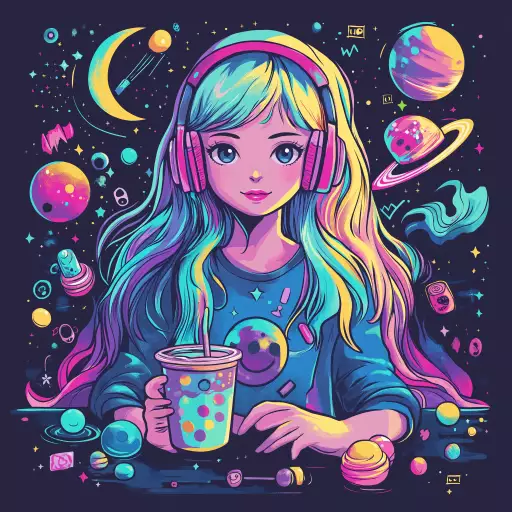Explore the Best AI Image Gallery

Beyond the Brush: How AI-Generated Visual Content is Reshaping Creativity
The realm of art and design has always been a playground for innovation, constantly pushing boundaries and exploring new mediums. Now, with the rise of artificial intelligence (AI), were witnessing another paradigm shift. AI-generated visual content is no longer a futuristic concept; its a tangible reality, impacting the creative industry in profound ways.
From generating stunning artwork to creating realistic imagery for marketing campaigns, AI tools are empowering creators with unprecedented capabilities. This revolution opens doors to exciting possibilities, but it also raises important ethical questions that we must address as we navigate this new landscape.
The Power of Algorithmic Creativity
AI algorithms can analyze vast datasets of images, learn patterns and styles, and generate original artwork that often rivals human-created pieces. These tools offer a wide range of applications:
- Art Generation: AI can create abstract art, landscapes, portraits, and even photorealistic renderings based on user input or specific prompts.
- Design Assistance: Designers can leverage AI to generate logo concepts, website mockups, product designs, and other visual assets, streamlining the creative process.
- Content Creation: Businesses can use AI to produce marketing materials, social media graphics, illustrations for articles, and other visual content, saving time and resources.
- Personalization: AI can generate customized artwork, fashion designs, or even virtual environments tailored to individual preferences.
Ethical Considerations in the Age of AI Art
While the potential benefits are undeniable, its crucial to acknowledge the ethical implications of AI-generated visual content:
- Copyright and Ownership: Who owns the copyright to AI-generated artwork? Is it the creator who provided the prompt, the developer of the AI algorithm, or the AI itself?
- Bias and Representation: AI algorithms are trained on existing datasets, which may contain biases that perpetuate stereotypes or underrepresent certain cultures.
- Authenticity and Value: How do we define the value of art created by machines? Does it hold the same artistic merit as human-made works?
- Job displacement: Could AI automation lead to job losses in creative fields? Its essential to consider the impact on human artists and designers.
The Future of Creativity: A Collaborative Landscape
The future of creativity likely lies in a collaborative relationship between humans and AI. Rather than viewing AI as a replacement for human artists, we should embrace it as a powerful tool that can augment our creative abilities.
AI can handle repetitive tasks, generate initial concepts, and explore unconventional ideas, freeing up human creators to focus on higher-level conceptualization, artistic vision, and emotional expression.
Education and training will be crucial in preparing future generations for this evolving landscape. Artists, designers, and developers need to acquire new skills and adapt their workflows to effectively leverage AI tools.
Conclusion
AI-generated visual content is undoubtedly transforming the creative industry, offering exciting possibilities while raising important ethical considerations. By embracing a collaborative approach, fostering responsible development practices, and prioritizing human creativity, we can navigate this transformative era and unlock new frontiers of artistic expression.












![**Representation: A dog acting as a private tutor to a child. The dog holds a ruler in its paw and stands at the blackboard to explain a dog diagram to the child. Graphic style: Line drawing, cartoon style, influenced by Franco-Belgian comics, thick black lines, simplified design, vector, black and white only, in the style of Keith Haring or the French comic strip "Alinéa". [IMPORTANT]: A single continuous line extending from one side of the image to the other, minimalist, strong outlines, line drawing, without lifting the hand, ultra-simplified, no shading, entirely white image, drawing created in the center of a sheet of paper. --ar 16:5** - Variations (Strong) by <@627984126871470085> (fast)](https://images.ai-img.art/thumbnails/150/f4e034998ccd869d8a061fd12017514fcd92210eb33d4222dc9b54716223f4dd.webp)



](https://images.ai-img.art/thumbnails/150/51c93500396faff4e7fa8b42bc68033067b16b2230e3496e95c482a581ff0fe9.webp)











](https://images.ai-img.art/thumbnails/150/9d51c5e673b4f2068b7b01abc35425a06f173b76303adf9ad29ca14302c25b18.webp)

![**Representation: A dog acting as a private tutor to a child. The dog holds a ruler in its paw and stands at the blackboard to explain a dog diagram to the child. Graphic style: Line drawing, cartoon style, influenced by Franco-Belgian comics, thick black lines, simplified design, vector, black and white only, in the style of Keith Haring or the French comic strip "Alinéa". [IMPORTANT]: A single continuous line extending from one side of the image to the other, minimalist, strong outlines, line drawing, without lifting the hand, ultra-simplified, no shading, entirely white image, drawing created in the center of a sheet of paper. --ar 16:5** - <@627984126871470085> (fast)](https://images.ai-img.art/thumbnails/150/7a854648a81e51241dcca8d24dd6e3bfcf07ad1df51baf401c9b729f4cf411fa.webp)


](https://images.ai-img.art/thumbnails/150/157712d76865d557120f9baf988de3d0525225295a2789c89bf2c4a5a96a03d1.webp)







![**Representation: A teenager smiling while thinking about a friendly dog, a comic-style thought bubble with a friendly dog inside. Graphic style: Line drawing, cartoon style, influenced by Franco-Belgian comics, thick black lines, simplified design, vector, black and white only, in the style of Keith Haring or the French comic strip "Alinéa". [IMPORTANT]: A single continuous line extending from one side of the image to the other, minimalist, strong outlines, line drawing, without lifting the hand, ultra-simplified, no shading, entirely white image, drawing created in the center of a sheet of paper. --ar 16:5** - <@627984126871470085> (fast)](https://images.ai-img.art/thumbnails/150/6fc850f638e3dee0c4b121acecad2c8419e02bdeac7f871d625f1003c1c3abe1.webp)


